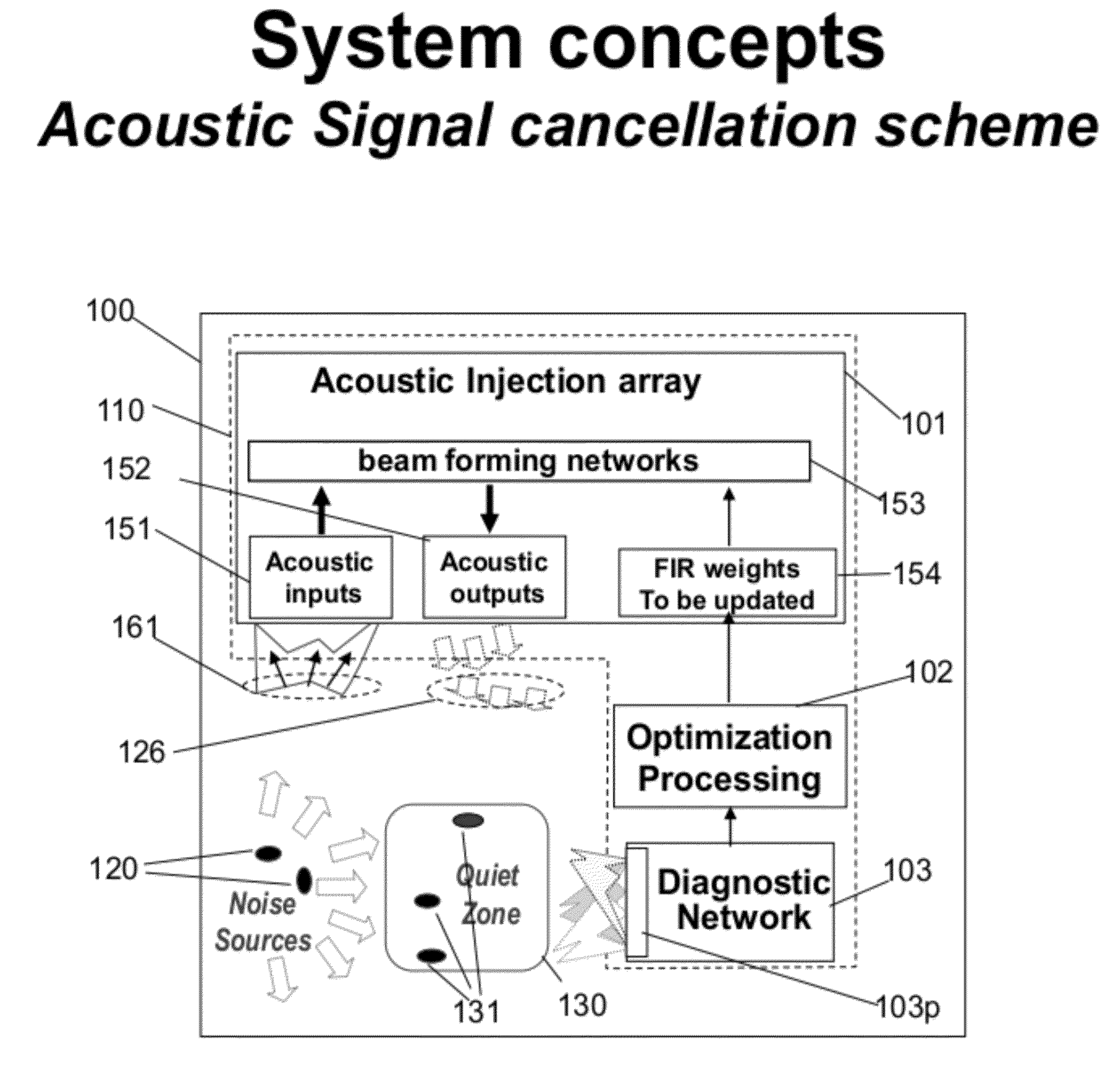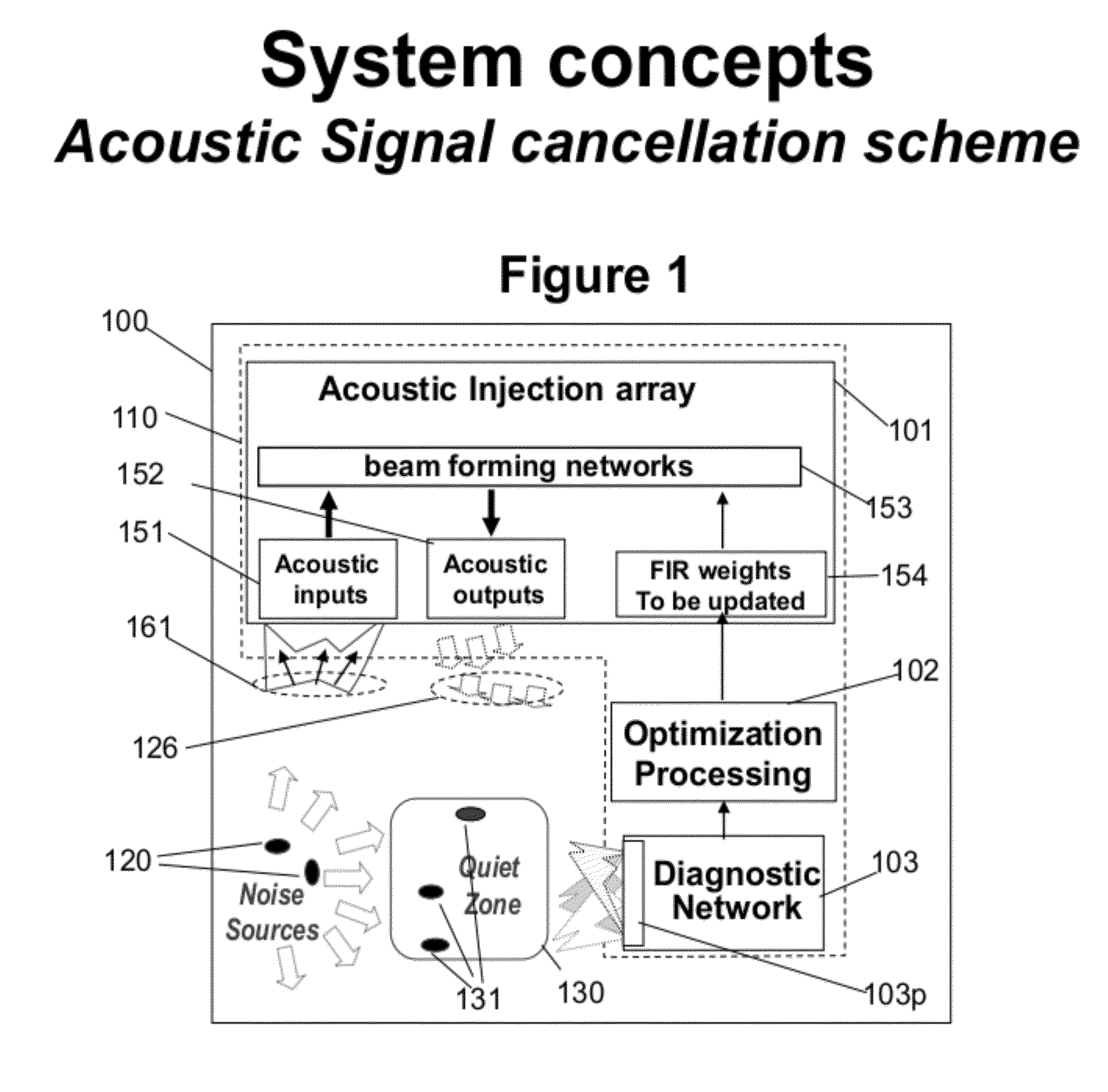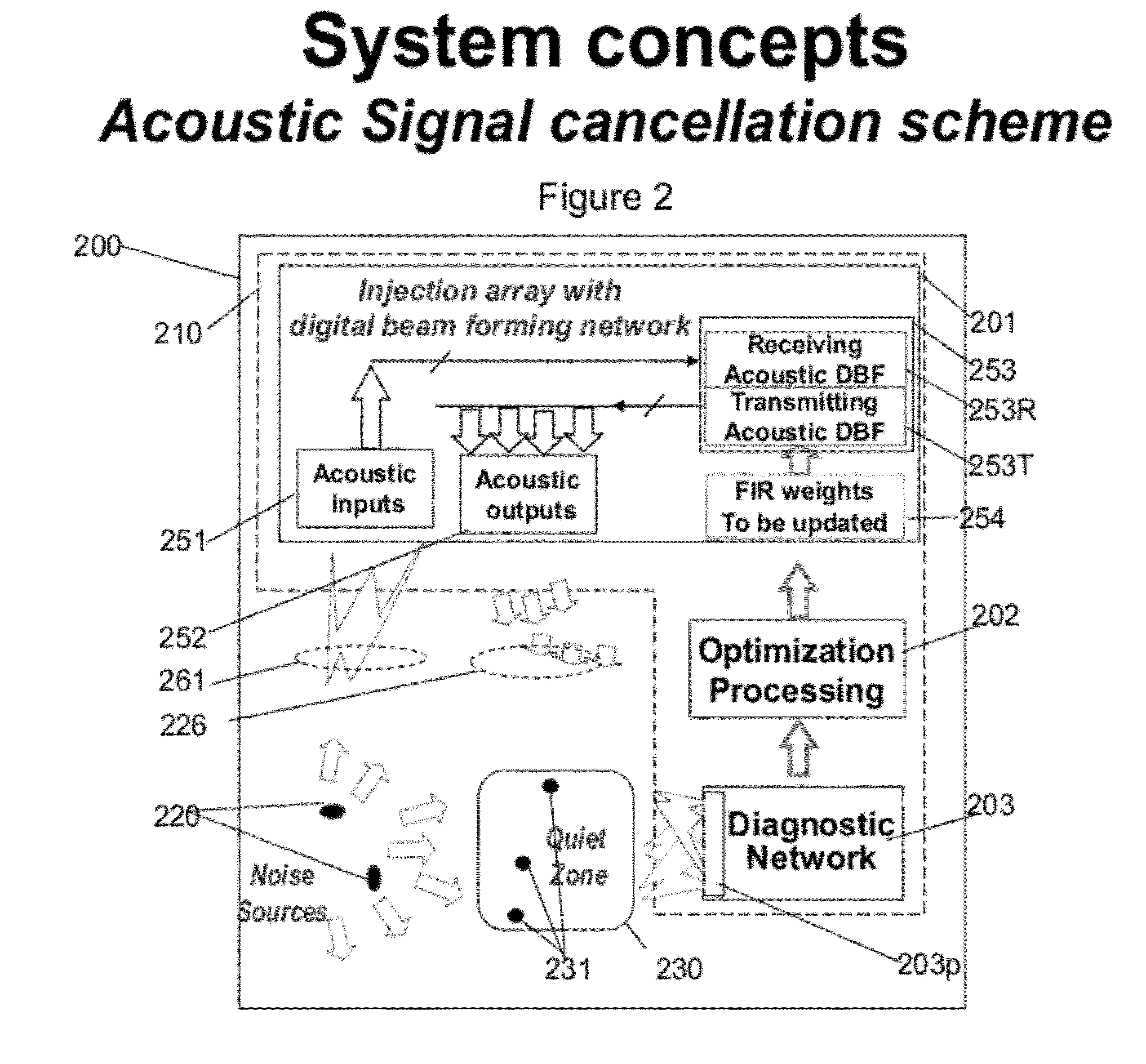Generating Acoustic Quiet Zone by Noise Injection Techniques
- Summary
- Abstract
- Description
- Claims
- Application Information
AI Technical Summary
Benefits of technology
Problems solved by technology
Method used
Image
Examples
Embodiment Construction
[0070]The proposed acoustic quiet zone generation technique features injection of the undesired acoustic noise at low power levels for cancellations. The noise mitigation technique comprises an auxiliary acoustic injection array with iterative processing to maintain a dynamic acoustic quiet zone over user-located areas.
[0071]FIG. 1 depicts the functional blocks of the acoustic signal cancellation apparatus (100). One such a design (110) features the following functions: (1) an acoustic Injection array (101), (2) optimization processing (102), and (3) diagnostic network (103).
[0072]Acoustic injection array (101) consists of (1) an array of pickup sensors as M acoustic inputs (151) to pick up acoustic noise signals from noise sources (120) in real time, (2) a beam forming network (BFN) (153) with an M-to-N distribution network, and (3) an array of N acoustic signal injectors (152). The M-to-N BFN (112), where M=number of acoustic inputs (151) and N=acoustic outputs (152), feature elec...
PUM
 Login to View More
Login to View More Abstract
Description
Claims
Application Information
 Login to View More
Login to View More - R&D
- Intellectual Property
- Life Sciences
- Materials
- Tech Scout
- Unparalleled Data Quality
- Higher Quality Content
- 60% Fewer Hallucinations
Browse by: Latest US Patents, China's latest patents, Technical Efficacy Thesaurus, Application Domain, Technology Topic, Popular Technical Reports.
© 2025 PatSnap. All rights reserved.Legal|Privacy policy|Modern Slavery Act Transparency Statement|Sitemap|About US| Contact US: help@patsnap.com



